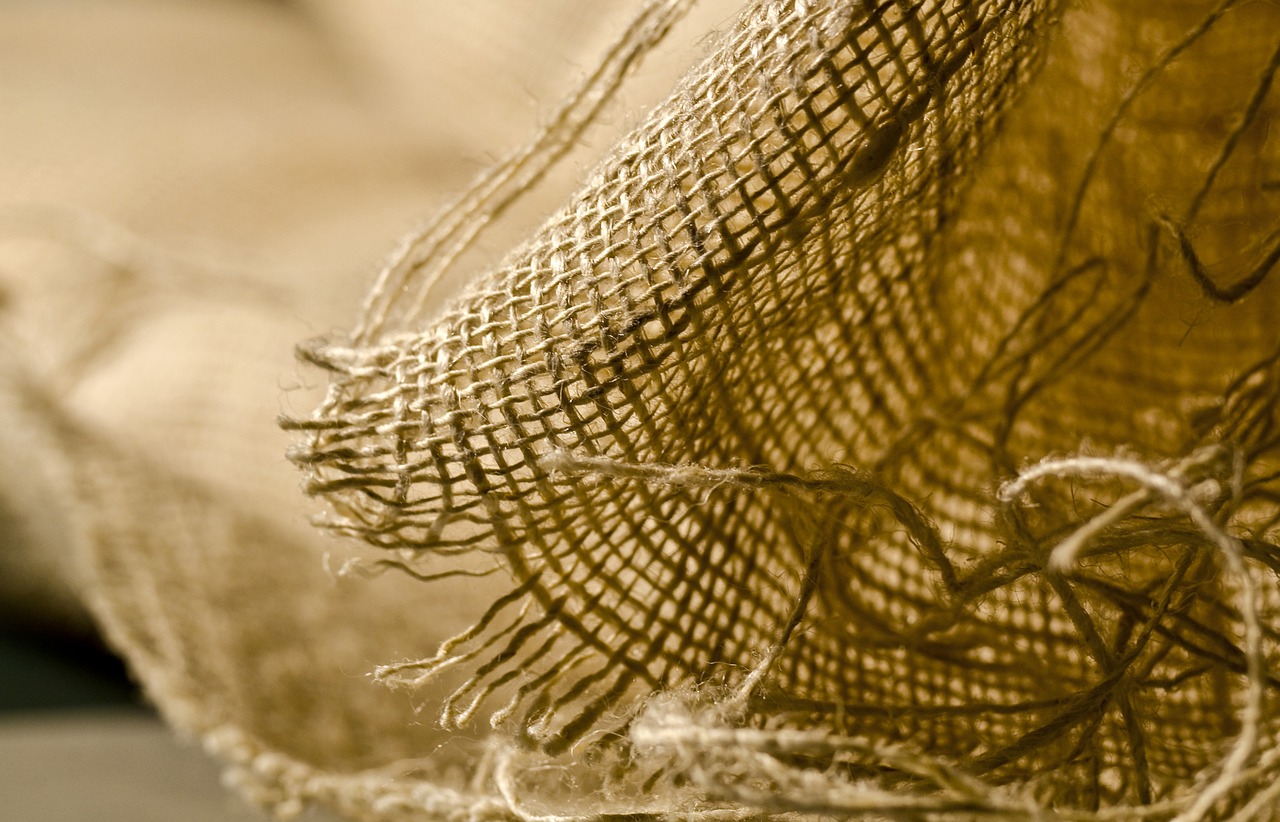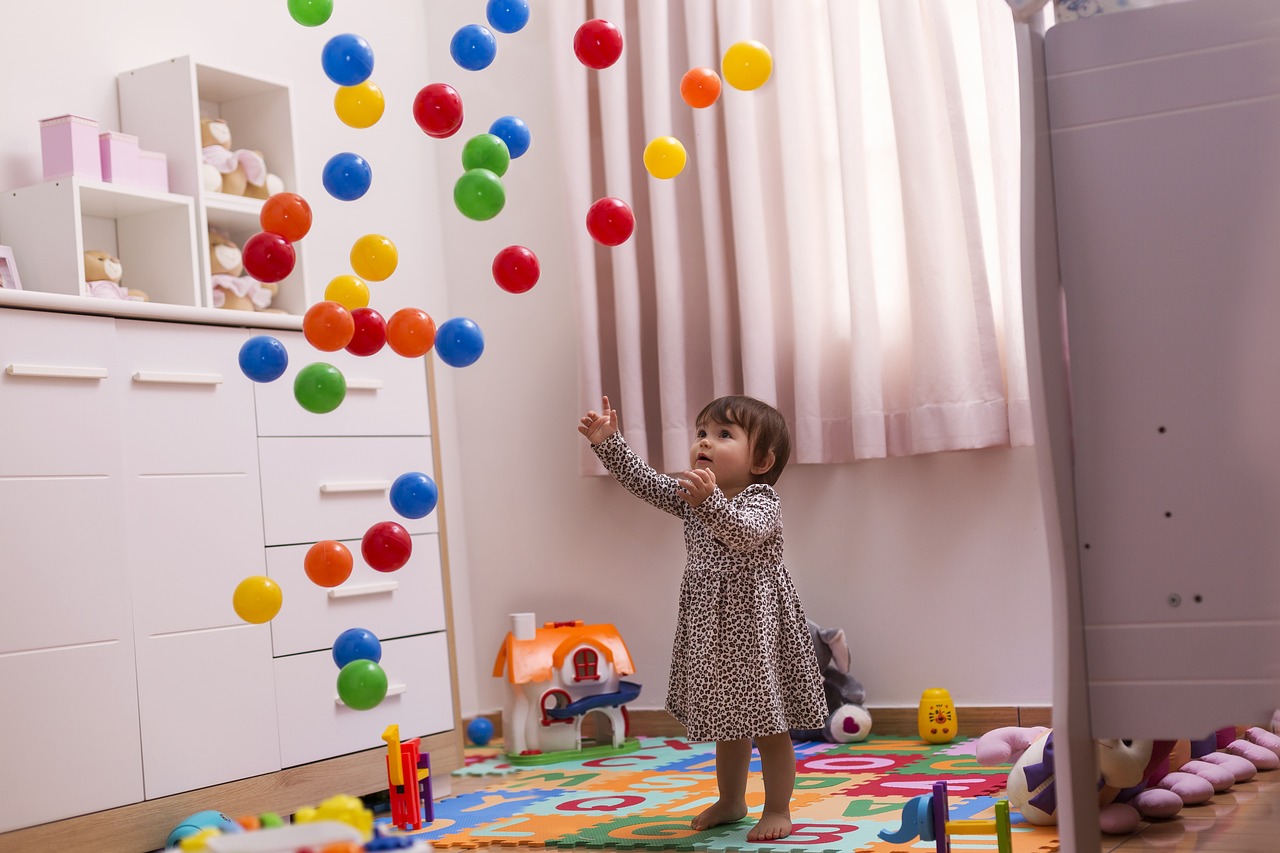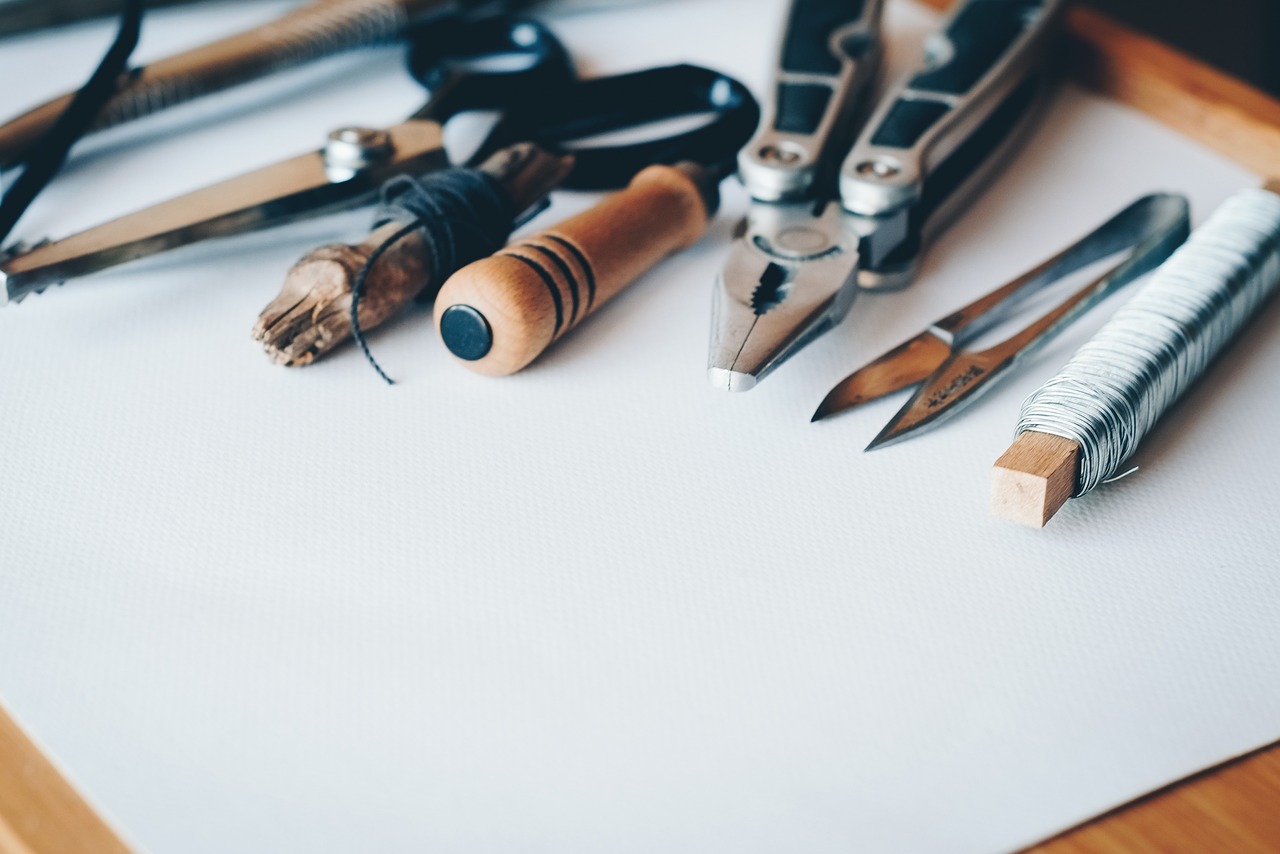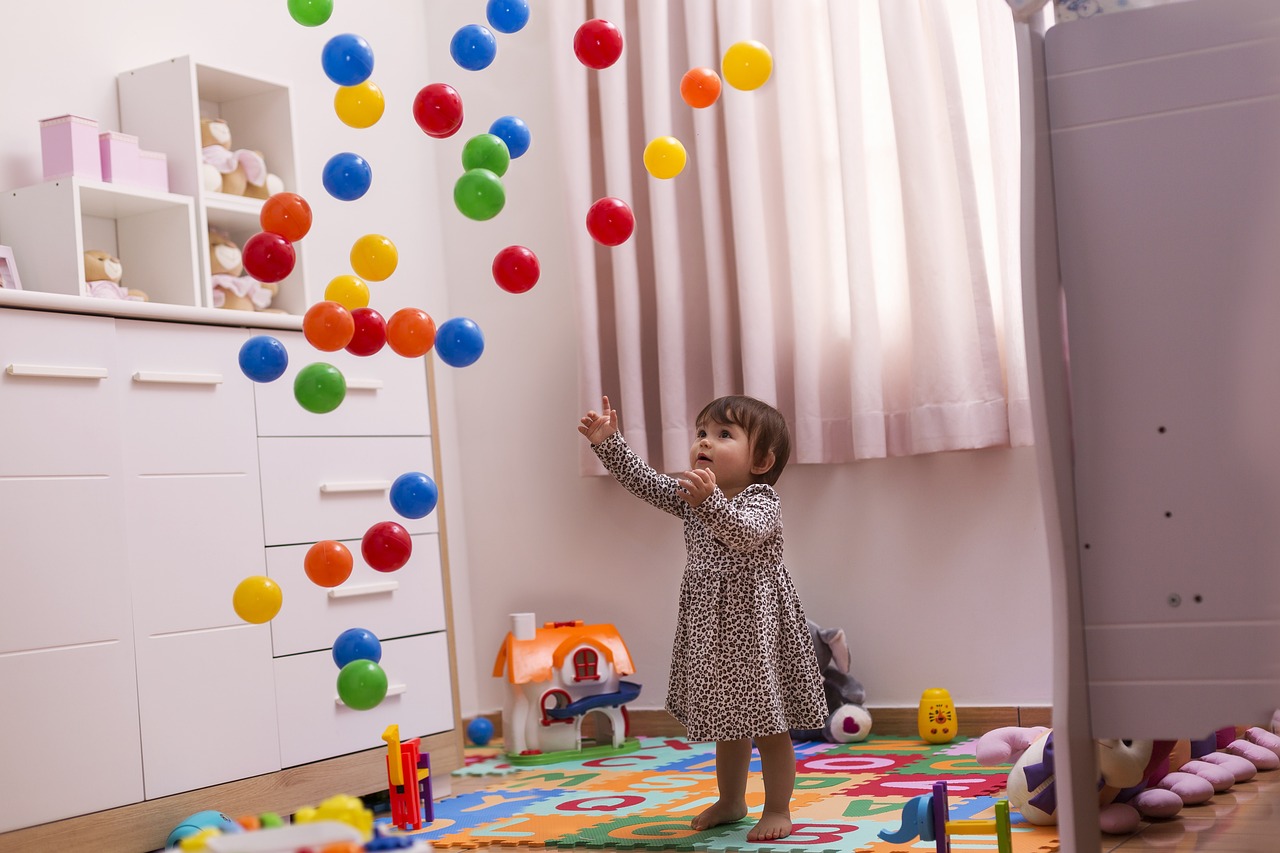Promoting Fine Motor Skills with Crafts for Kids
Crafting is not just about creating something beautiful; it's a gateway to enhancing fine motor skills in children! When kids engage in hands-on activities, they are not only expressing their creativity but also developing essential skills that will benefit them throughout their lives. Fine motor skills involve the coordination of small muscles in the hands and fingers, which are crucial for tasks such as writing, buttoning shirts, and tying shoelaces. So, what better way to promote these skills than through fun and engaging craft activities?
Imagine your child, with a pair of scissors in hand, carefully cutting out shapes from colorful paper. Each snip is not just a step in creating a masterpiece; it’s also a practice session for their dexterity and control. As they glue pieces together, they are honing their hand-eye coordination, which is vital for many everyday tasks. The beauty of crafting is that it seamlessly blends learning with play, making it an enjoyable experience that kids will love!
Many parents wonder how they can incorporate crafting into their child's routine. The answer is simple: make it a regular activity! Set aside time each week for crafting sessions, whether it's a rainy day indoors or a sunny afternoon outside. You can explore various materials like paper, fabric, or even natural elements like leaves and twigs to create unique projects. Not only does this provide an opportunity for fine motor skill development, but it also encourages creativity and self-expression.
Incorporating different types of crafts can keep things exciting. For instance, you might consider paper crafts, which involve cutting, folding, and gluing. These activities are fantastic for developing dexterity and can be tailored to suit your child's age and skill level. You could also explore textile crafts like sewing and weaving, which not only improve hand strength but also provide a tactile experience that enhances sensory development.
As you embark on this crafting journey with your child, remember that the process is just as important as the final product. Celebrate their efforts, encourage them to try new techniques, and most importantly, have fun! Crafting is a wonderful way for children to express themselves, build confidence, and develop skills that will serve them well in the future.
Understanding fine motor skills is crucial for child development. These skills enable children to perform everyday tasks, enhancing their independence and confidence as they grow. When children master fine motor skills, they can engage more fully in their environment, from buttoning their coats to holding a pencil correctly. It’s like giving them the keys to unlock their potential in a world full of possibilities!
Q: What are fine motor skills?
A: Fine motor skills involve the small muscles in the hands and fingers that allow for precise movements, such as writing, cutting, and buttoning clothing.
Q: How can crafting help improve fine motor skills?
A: Crafting activities, such as cutting, gluing, and folding, require children to use their hands in coordinated ways, which strengthens their fine motor skills.
Q: What types of crafts are best for young children?
A: Simple paper crafts, such as collages or origami, and textile crafts, like sewing with large needles, are excellent for young children as they are engaging and help develop fine motor skills.
Q: How often should I encourage my child to craft?
A: Aim for at least once a week! Regular crafting sessions can help reinforce fine motor skills while keeping the activity fresh and exciting.

The Importance of Fine Motor Skills
Understanding fine motor skills is crucial for child development. These skills involve the small muscles in a child's hands and fingers, allowing them to perform essential tasks like writing, buttoning shirts, and using utensils. When children engage in activities that promote fine motor skills, they not only enhance their physical abilities but also boost their confidence and independence. Imagine a child struggling to hold a pencil; now picture them mastering that grip and confidently writing their name. That transformation is what fine motor skills can achieve!
Fine motor skills are foundational for various aspects of a child's life. They play a significant role in academic success, particularly in tasks that require precision and control. For instance, children who struggle with fine motor skills may find it challenging to complete homework assignments involving writing or drawing. As they gain proficiency in these skills, their academic performance can improve, leading to a more positive learning experience.
Moreover, fine motor skills are not just about academic tasks; they are essential for everyday activities. From tying shoelaces to playing musical instruments, these skills empower children to navigate their world with ease. Think about it: when a child can button their coat independently, they not only feel accomplished but also gain a sense of autonomy. This newfound independence can greatly enhance their self-esteem and overall well-being.
To highlight the significance of fine motor skills, consider the following key points:
- Independence: Mastering fine motor skills allows children to perform daily tasks on their own.
- Academic Success: Proficiency in fine motor skills contributes to better performance in school activities.
- Social Interaction: Engaging in activities that require these skills can improve peer relationships through shared experiences.
- Creativity: Fine motor skills are essential for artistic expression, allowing children to explore their creativity through various crafts.
In summary, fostering fine motor skills in children is not just about preparing them for school; it’s about equipping them with the tools they need for life. By engaging in activities that enhance these skills, we are paving the way for their future successes, both academically and personally. Every small improvement in their fine motor abilities is a step toward greater independence and confidence, making it an essential focus in their development.

Crafts That Promote Fine Motor Skills
Engaging children in crafts is like opening a treasure chest filled with opportunities for growth and development. When kids dive into hands-on activities, they not only unleash their creativity but also sharpen their fine motor skills. These skills are essential for tasks that require precision, such as writing, buttoning shirts, and even tying shoelaces. The beauty of crafts is that they can be both fun and educational, providing the perfect environment for children to practice these skills without even realizing it!
One of the most delightful aspects of crafting is the variety it offers. From paper crafts to textile projects, each type of craft presents unique challenges and learning experiences. For instance, when children engage in paper crafts like cutting and folding, they are not just making art; they are also honing their dexterity. The simple act of manipulating scissors to cut shapes can significantly improve their hand-eye coordination, while gluing pieces together helps develop their precision and control.
Another exciting avenue is textile crafts, which include activities like sewing, weaving, and embroidery. These crafts provide a tactile experience that is incredibly beneficial for sensory development. As children learn to thread a needle or weave fabric, they are simultaneously building their hand strength and coordination. It's a bit like learning to ride a bike; at first, it may seem daunting, but with practice, they gain confidence and skill.
Moreover, incorporating tools into crafting can elevate the experience and further enhance motor skills. For example, using scissors requires grip strength and control, which are vital for more complex tasks later on. A simple scissor skills exercise might involve cutting out shapes from colored paper, allowing kids to practice their grip while creating something beautiful. Similarly, stamping and stenciling activities encourage children to explore their creativity while practicing precision. These activities can be tailored to suit different age groups, ensuring that every child can participate and benefit.
In summary, the world of crafts is a vibrant playground for children to develop their fine motor skills. By engaging in various activities, kids can build the dexterity and control they need for everyday tasks, all while having a blast. So, grab those scissors, glue, and colorful materials, and watch as your child's skills flourish through the magic of crafting!

Paper Crafts
When it comes to enhancing fine motor skills in children, are among the most effective and enjoyable activities. These crafts involve a variety of techniques such as cutting, folding, and gluing, which are essential for developing dexterity and hand-eye coordination. Imagine your child, scissors in hand, carefully snipping away at colorful sheets of paper. Each snip not only brings them closer to their creative vision but also strengthens their grip and control over the tools they are using.
One of the most exciting aspects of paper crafts is the sheer variety of projects you can undertake. For instance, simple origami can transform a flat piece of paper into a beautiful crane or a charming boat, requiring children to follow steps meticulously. This process not only enhances their concentration but also teaches them patience as they watch their creations come to life. Additionally, projects like collage making encourage kids to use different materials, such as magazine cutouts, fabric scraps, and stickers, allowing them to explore their creativity while honing their fine motor skills through repetitive actions.
Incorporating these crafts into your child’s routine can be both fun and educational. Here are some benefits of engaging in paper crafts:
- Improved Dexterity: Cutting and folding paper requires precision, which helps children develop better control over their hand movements.
- Enhanced Creativity: The freedom to create allows children to express themselves artistically, fostering their imagination.
- Boosted Confidence: Completing a craft project gives children a sense of accomplishment, boosting their self-esteem.
Moreover, paper crafts can be easily tailored to suit different age groups and skill levels. For younger children, simple tearing and gluing activities can be introduced, while older kids can tackle more complex projects like intricate origami or detailed collage work. The beauty of paper crafts lies in their versatility; you can adapt them to fit your child's interests or even the season. For example, creating holiday decorations or themed cards can make the activity even more engaging.
In conclusion, paper crafts are not just about creating beautiful art; they are a powerful tool for developing fine motor skills in children. So, gather some colorful paper, scissors, and glue, and watch as your little ones embark on a journey of creativity and skill-building!
Q: At what age can my child start doing paper crafts?
A: Children as young as 2-3 years can begin with simple tearing and gluing activities. As they grow older, you can introduce more complex tasks like cutting and folding.
Q: What materials do I need for paper crafts?
A: Basic materials include colorful paper, scissors, glue, and optional items like stickers, markers, and magazines for collage making.
Q: How can I ensure my child is safe while using scissors?
A: Always supervise your child during crafting sessions, and consider using child-safe scissors that are designed for little hands.
Q: Can paper crafts be educational?
A: Absolutely! Paper crafts can teach children about shapes, colors, and even improve their reading skills when they follow written instructions for complex projects.

Origami for Kids
Origami, the traditional Japanese art of paper folding, is not just a fun activity; it's an incredible way to enhance fine motor skills in children. As they fold paper into intricate shapes, kids engage their hands and minds in a way that promotes hand-eye coordination and concentration. Imagine a child, eyes wide with excitement, transforming a simple square of paper into a beautiful crane or a colorful flower. This transformation is not just magical; it’s a fantastic exercise for their developing motor skills!
When children practice origami, they learn to manipulate paper with precision. Each fold requires them to think critically about angles and dimensions, which is akin to solving a puzzle. This process builds their problem-solving abilities while improving dexterity. The best part? They get to enjoy a sense of accomplishment when they see their finished product. It's like watching a caterpillar turn into a butterfly!
To get started with origami, all you need is some paper and a bit of guidance. There are countless resources available, from books to online videos, that can help kids learn various designs. Here are a few beginner-friendly origami projects that can spark their interest:
- Origami Boats - Simple and fun, perfect for younger children.
- Origami Flowers - A great way to introduce color and creativity.
- Origami Animals - Engaging and can lead to storytelling adventures.
As they progress, children can tackle more complex designs, which will challenge their skills and patience. It’s essential to encourage them to take their time and enjoy the process. After all, the journey of creating something beautiful is just as important as the final product!
Additionally, origami can be a wonderful group activity. Kids can work together, share tips, and even hold competitions to see who can create the most impressive design. This not only enhances their social skills but also builds a sense of community and teamwork.
Incorporating origami into your child’s routine can be a game-changer. It’s a delightful blend of art and science, where creativity meets logic. So why not grab some colorful paper and dive into the world of origami? Your child might just discover a new passion while honing their fine motor skills!
Q: What age is appropriate for children to start learning origami?
A: Children as young as 4 or 5 years old can start with simple designs, while older kids can tackle more complex projects.
Q: Do I need special paper for origami?
A: While origami paper is ideal, any paper can work. Try using colored printer paper or even recycled paper for practice!
Q: How can I encourage my child to enjoy origami?
A: Make it a fun family activity! Join them in creating projects, and celebrate their successes, no matter how small.

Collage Making
Creating collages is not just a fun and engaging activity; it's a fantastic way for children to enhance their fine motor skills while letting their creativity shine. When kids dive into the world of collages, they get to explore a variety of materials like paper, fabric, and even natural elements like leaves and flowers. This hands-on experience requires them to cut, arrange, and glue, which are all essential actions that help develop dexterity and hand strength.
As children cut out shapes and images from magazines or colored paper, they practice their scissor skills, which is crucial for improving grip and control. The repetitive motion of cutting and pasting engages their fingers in a workout, making them more adept at handling tools and materials in the future. Moreover, collage making allows for a great deal of freedom and expression. Kids can choose what to include in their collages, giving them the opportunity to make personal artistic choices.
To get started with a collage project, you don’t need much—just some basic supplies! Here’s a quick list of what you might need:
- Magazines or colored paper
- Child-safe scissors
- Glue sticks or liquid glue
- Construction paper as a base
- Optional: embellishments like stickers, glitter, or fabric scraps
Collage making also introduces children to important concepts such as composition and color theory. As they decide where to place each piece, they learn about balance and visual appeal, which are fundamental elements of art. This not only enhances their artistic skills but also boosts their confidence as they see their unique creation come to life.
Furthermore, collages can be themed or based on a particular story, which can lead to discussions about their inspiration and choices. This promotes verbal skills and encourages children to articulate their thoughts and ideas. Whether they're making a collage about their favorite animals or a representation of their family, the possibilities are endless!
In summary, collage making is a delightful and educational craft that combines fine motor skill development with creativity. It’s a perfect activity for parents and educators to introduce to children, providing a memorable experience that supports their growth in multiple ways.
Q: What age is appropriate for kids to start making collages?
A: Children as young as 3 can begin with simple collages using larger pieces of paper and safe scissors. As they grow older, the complexity of the materials and techniques can increase.
Q: How can I encourage my child to be more creative with their collages?
A: Provide a variety of materials and themes to spark their imagination. Encourage them to think outside the box and use unexpected items like fabric or natural elements.
Q: Are there any safety tips for using scissors and glue?
A: Always supervise young children while using scissors and ensure they use child-safe scissors. Teach them the importance of using glue carefully to avoid messes.

Textile Crafts
When it comes to engaging children in creative activities, stand out as a fantastic option. These crafts, which include sewing, weaving, and embroidery, not only allow kids to express their creativity but also play a significant role in enhancing their fine motor skills. Imagine your child threading a needle for the first time or weaving colorful patterns; these moments are not just fun—they are essential milestones in their development. As they manipulate different materials, children strengthen their hand muscles and improve their coordination, setting the foundation for tasks they will encounter later in life, like writing or buttoning their shirts.
One of the most captivating aspects of textile crafts is the tactile experience they offer. Children get to feel the textures of various fabrics, threads, and yarns, which can be incredibly stimulating for their senses. This hands-on interaction helps them learn about different materials and how to work with them. For example, when weaving, they must understand how to handle the yarn, which involves a level of dexterity that can be quite challenging at first. But with practice, they will not only become more adept but also gain a sense of accomplishment that boosts their confidence.
To get started with textile crafts, you don’t need a lot of fancy tools or expensive materials. Here are some simple ideas to inspire creativity while enhancing those fine motor skills:
- Sewing Cards: Create cards with pre-punched holes that children can sew through using colorful yarn. This activity is excellent for practicing hand-eye coordination and grip.
- Fabric Collages: Encourage children to cut shapes from different fabrics and glue them onto a canvas or paper. This not only fosters creativity but also refines cutting and pasting skills.
- Simple Weaving Projects: Use cardboard looms to introduce basic weaving techniques. Kids can use strips of paper or fabric to create their own unique designs.
By incorporating these activities into your crafting routine, you'll be amazed at how quickly children develop their fine motor skills. Plus, the joy they experience while creating something with their own hands is priceless. As they sew or weave, they learn patience and perseverance, important traits that extend beyond crafting. It's like planting seeds of creativity that will blossom into various skills as they grow.
In conclusion, textile crafts are not just about making pretty things; they are a gateway to developing essential fine motor skills that will benefit children throughout their lives. So, gather some materials, roll up those sleeves, and watch as your little ones create masterpieces while honing their abilities!

Using Tools for Crafting
Incorporating tools into crafting activities can significantly enhance the experience for children while simultaneously developing their fine motor skills. Tools such as scissors, glue guns, and stamps not only make crafting more engaging but also introduce children to the concept of using tools safely and effectively. Imagine a child wielding a pair of scissors for the first time; it's like giving them a magic wand that opens up a world of creativity! However, with great power comes great responsibility, so it's essential to guide them in using these tools properly.
When children learn to use tools, they gain a sense of independence and accomplishment. For example, mastering scissor skills can be a rite of passage for many kids. They start with simple cutting exercises, like snipping along a straight line, which not only enhances their grip strength but also improves their control and coordination. As they progress, they can tackle more complex shapes, transforming simple paper into stunning creations. This journey of skill development can be both challenging and rewarding, much like climbing a mountain where each step up brings a new view and a sense of achievement.
Another fantastic tool to incorporate is the glue gun. While it may seem intimidating, with proper supervision, children can use it to adhere various materials together, fostering their creativity and enhancing their hand-eye coordination. Watching them carefully apply glue to their project is akin to watching a chef artfully plate a dish; it requires precision and intention. Furthermore, using a glue gun can also introduce concepts of cause and effect—when they place two pieces together, they can see the immediate results of their actions.
Stamping and stenciling are also excellent activities that allow kids to explore their artistic side while practicing precision and control. These tools provide a fun way for children to create designs, patterns, or even their own artwork. The repetitive motion of pressing down a stamp or carefully tracing a stencil helps refine their motor skills, making them more adept at handling various crafting materials. Plus, it’s a fantastic way to encourage creativity! Kids can create their own unique masterpieces, much like an artist in their studio, experimenting with different colors and designs.
In conclusion, using tools in crafting not only makes the activities more enjoyable but also plays a crucial role in developing fine motor skills in children. By introducing them to scissors, glue guns, and stamps, we empower them to express their creativity while honing their dexterity. So, the next time you sit down for a crafting session, remember that these tools are not just accessories; they are gateways to learning and self-expression!
- What age is appropriate for kids to start using scissors? Generally, children can start using safety scissors around age 3, but supervision is essential.
- Are glue guns safe for children? Yes, but they should only be used with adult supervision due to the risk of burns.
- How can I ensure my child uses crafting tools safely? Always supervise them, demonstrate proper usage, and provide age-appropriate tools.

Scissor Skills
When it comes to developing fine motor skills in children, practicing scissor skills is a game-changer. Think of scissors as the magic wands of the crafting world; they not only transform paper but also help little hands gain strength and control. By engaging in activities that involve cutting, kids learn to manage the tools effectively, which is a vital part of their growth. Just like learning to ride a bike, mastering scissor skills requires practice, patience, and a little bit of guidance.
One of the best ways to introduce scissor skills is through fun and simple cutting activities. Start with basic shapes like circles and squares. As children become comfortable with these shapes, you can gradually introduce more complex patterns. It's essential to create a safe and encouraging environment where they can experiment without fear of making mistakes. Remember, every snip is a step towards greater dexterity!
Here’s a quick overview of some activities that can help children improve their scissor skills:
- Cutting Strips: Provide children with strips of paper to cut. This helps them practice control and grip strength.
- Shape Cutting: Use templates of various shapes for them to cut out. This adds an element of fun and creativity.
- Collage Creation: Let them cut out pictures from magazines to create their own collages. This activity combines cutting with artistic expression!
Additionally, it's crucial to focus on grip and hand positioning when using scissors. Encourage children to hold the scissors with their thumb in one hole and their fingers in the other. This grip not only enhances their control but also prepares them for more complex tasks down the line. You can even set up a scissor skills station with various materials such as construction paper, magazines, and colored paper. This station could also include safety scissors for younger children, ensuring that they can explore without risk.
As they progress, you can introduce more advanced techniques, like cutting along curved lines or creating fringes. These challenges will not only improve their scissor skills but also boost their confidence. Just like a chef mastering knife skills, each snip will empower them to tackle new and exciting projects. So, let’s get those scissors snipping!
Here are some common questions parents might have about helping their children develop scissor skills:
- At what age can my child start using scissors? Generally, children can start using child-safe scissors around age 3, but supervision is crucial.
- How can I make scissor practice more fun? Incorporate games like cutting out shapes to create a fun collage or using colorful paper to make art projects.
- What should I do if my child is struggling with scissors? Be patient! Encourage them with positive reinforcement and provide plenty of practice opportunities.

Stamping and Stenciling
Stamping and stenciling are not just fun activities; they are powerful tools for enhancing fine motor skills in children. When kids engage in these crafts, they are not only unleashing their creativity but also honing their precision and control. Imagine a child carefully pressing a stamp onto paper, their little fingers gripping the handle, focusing intently to create the perfect print. This action requires coordination and strength, both of which are essential components of fine motor development.
Stamping can come in various forms, from simple rubber stamps to more intricate designs. Children can explore different materials, like ink pads or paint, to create vibrant images. Each time they press down, they practice their grip and learn to control the amount of pressure they apply. This repetitive motion is not only enjoyable but also crucial for developing muscle memory. Moreover, the excitement of seeing their artwork come to life encourages kids to keep practicing, making it a win-win situation.
Stenciling, on the other hand, offers a unique way for children to engage with shapes and patterns. By using stencils, kids can trace outlines, which helps them improve their hand-eye coordination. As they follow the lines, they learn to control their movements, enhancing their dexterity. Additionally, this craft can be easily adapted for different skill levels. For younger children, simple shapes can be used, while older kids can tackle more complex designs.
To make the experience even more enriching, consider incorporating themes into the stamping and stenciling activities. For example, during holidays, children can create festive decorations by using themed stamps or stencils. This not only adds an element of fun but also connects them to seasonal celebrations, making the crafting experience memorable.
Furthermore, it's essential to provide a variety of tools and materials. Here’s a quick overview of some popular stamping and stenciling supplies:
| Tool/Material | Description |
|---|---|
| Rubber Stamps | Versatile stamps that can be used with ink pads for various designs. |
| Foam Stamps | Soft, easy-to-handle stamps that are great for younger kids. |
| Stencil Sheets | Reusable sheets with cut-out shapes for tracing and painting. |
| Ink Pads | Different colors of ink for making vibrant prints. |
| Paint | For a more colorful approach, children can use washable paint with stencils. |
In conclusion, stamping and stenciling are not just ordinary crafts; they are gateways to improving fine motor skills while fostering creativity. The joy of creating something unique, combined with the skill-building aspects of these activities, makes them an essential part of any child's crafting journey. So, gather your supplies, unleash your imagination, and watch as your child’s fine motor skills blossom through the magic of arts and crafts!
- What age is appropriate for stamping and stenciling? Stamping and stenciling can be adapted for children as young as three, with supervision. As they grow, the complexity of the designs can increase.
- Are there any safety concerns with stamping tools? Yes, always supervise young children when using tools like scissors or glue guns, and choose non-toxic materials whenever possible.
- Can these activities be educational? Absolutely! You can incorporate lessons about shapes, colors, and even storytelling through their stamped creations.
Frequently Asked Questions
- What are fine motor skills and why are they important?
Fine motor skills involve the use of small muscles in the hands and fingers to perform tasks like writing, buttoning shirts, and using utensils. These skills are crucial for children as they promote independence and confidence in everyday activities.
- How can crafts help improve fine motor skills in children?
Crafts that involve cutting, gluing, and folding help children practice precise movements. Engaging in various hands-on activities allows them to develop dexterity and coordination while having fun and expressing their creativity.
- What types of paper crafts are best for developing fine motor skills?
Simple paper crafts like origami and collage making are excellent choices. Origami enhances hand-eye coordination through intricate folding, while collages involve cutting and pasting, which refines motor skills through repetitive actions.
- Are textile crafts beneficial for fine motor skill development?
Absolutely! Textile crafts such as sewing, weaving, and embroidery significantly improve hand strength and coordination. These activities provide a tactile experience that not only enhances fine motor skills but also sensory development.
- What tools can be used to enhance crafting experiences?
Tools like scissors, glue guns, and stamps can elevate the crafting experience. Learning to use these tools safely helps children develop fine motor skills and fosters a sense of independence as they create.
- How can I help my child improve their scissor skills?
You can start with simple cutting exercises using safety scissors. Encourage them to cut along straight lines, curves, and shapes, gradually increasing complexity. This practice enhances grip strength and control, preparing them for more complex tasks.
- Are stamping and stenciling activities suitable for all ages?
Yes! Stamping and stenciling can be adapted for various age groups and skill levels. Younger children can use larger stamps and simple designs, while older kids can explore more intricate patterns, allowing everyone to enjoy these creative activities.



















